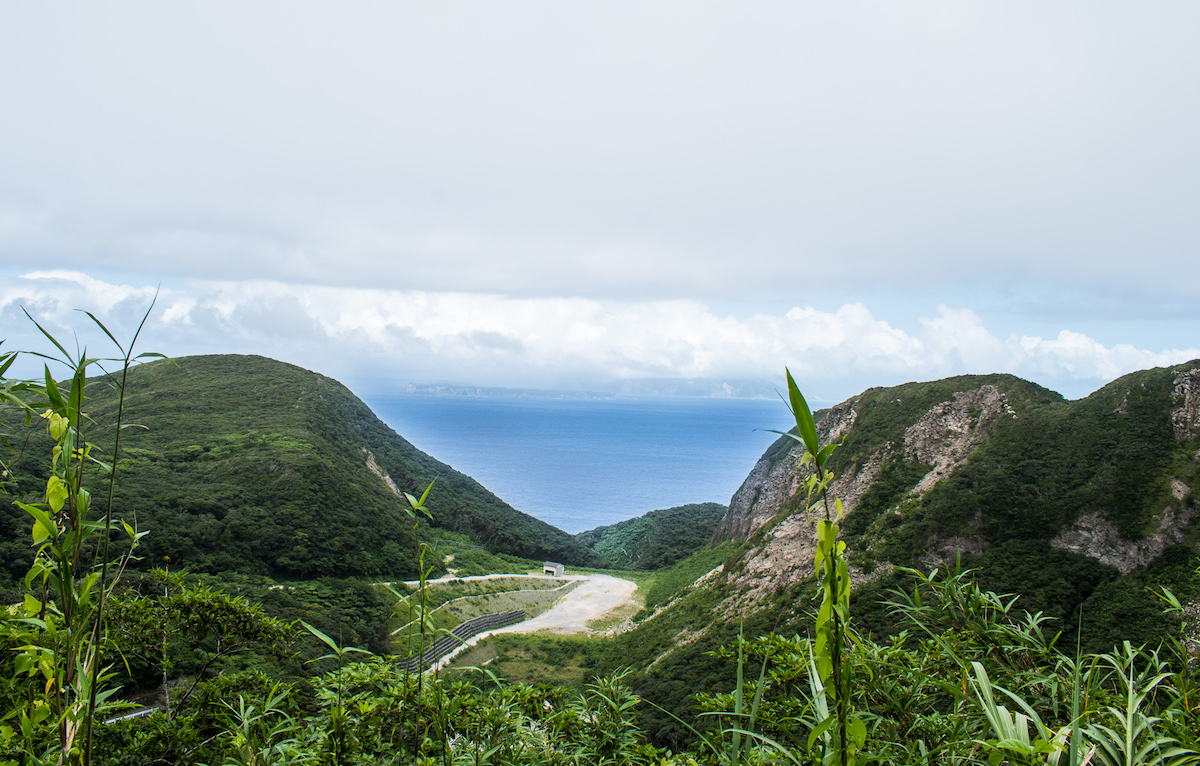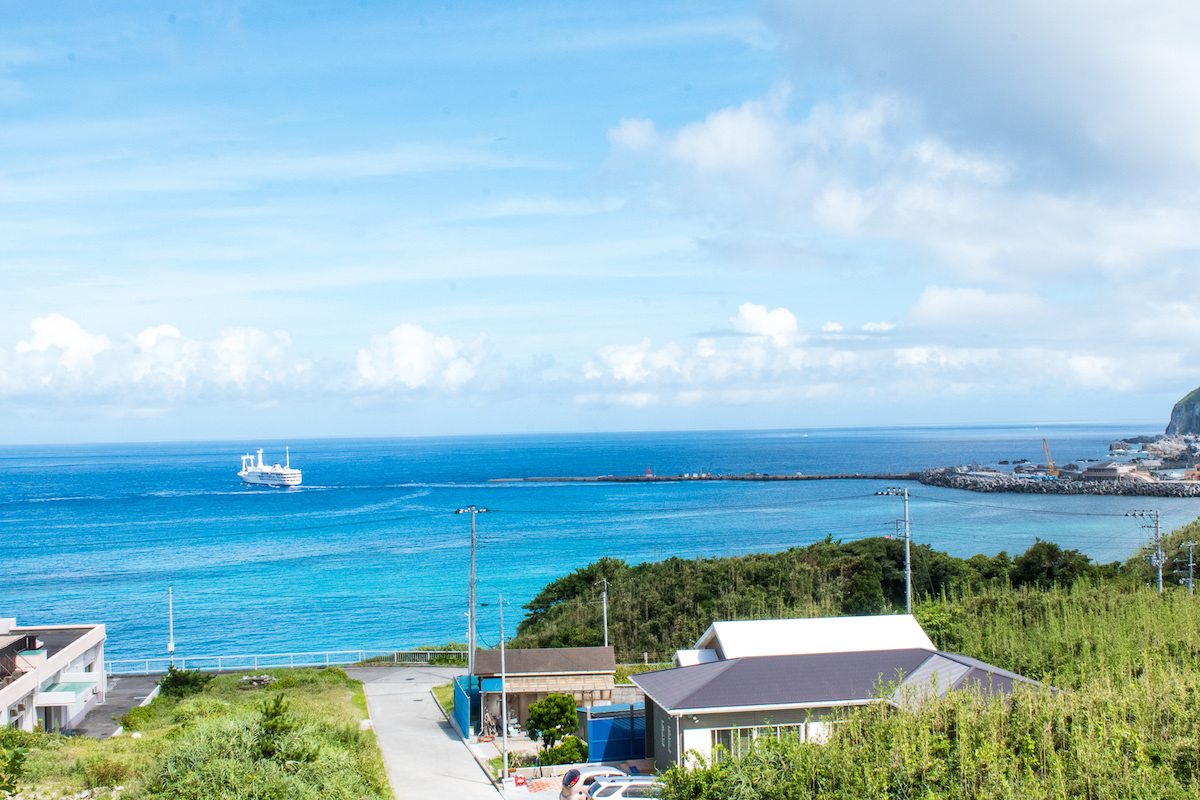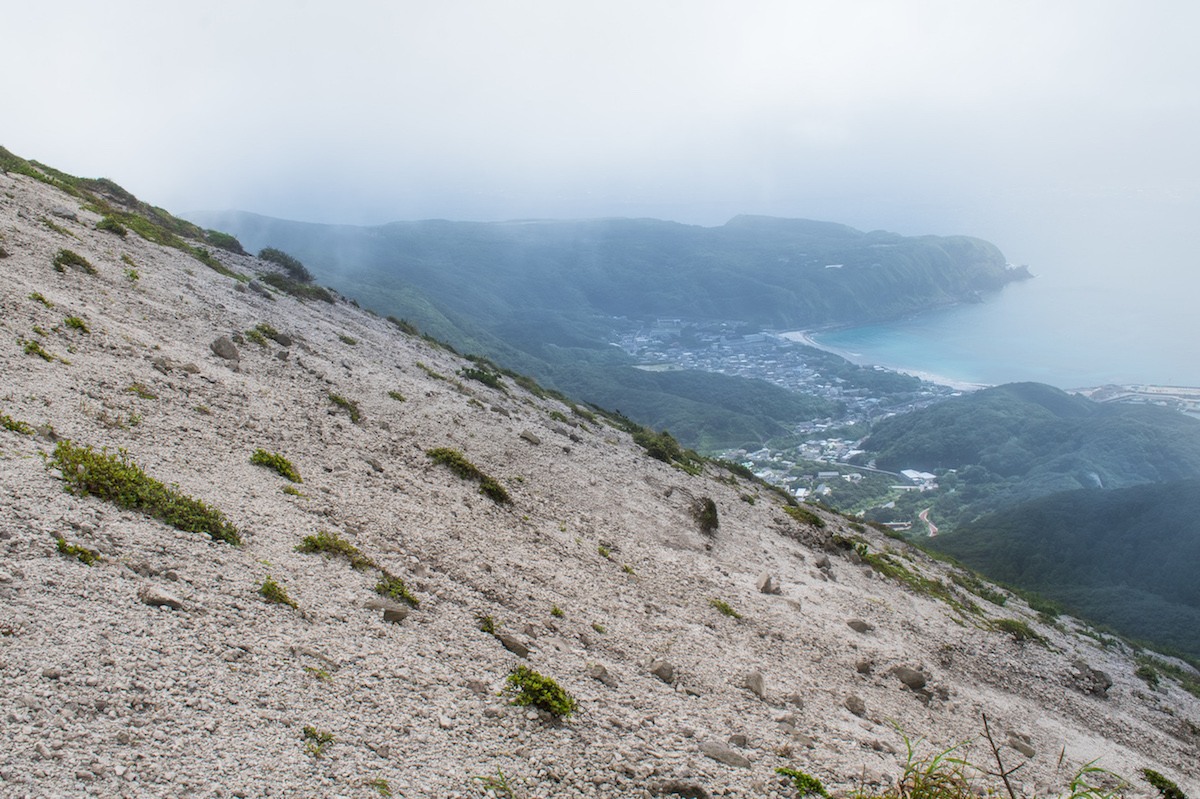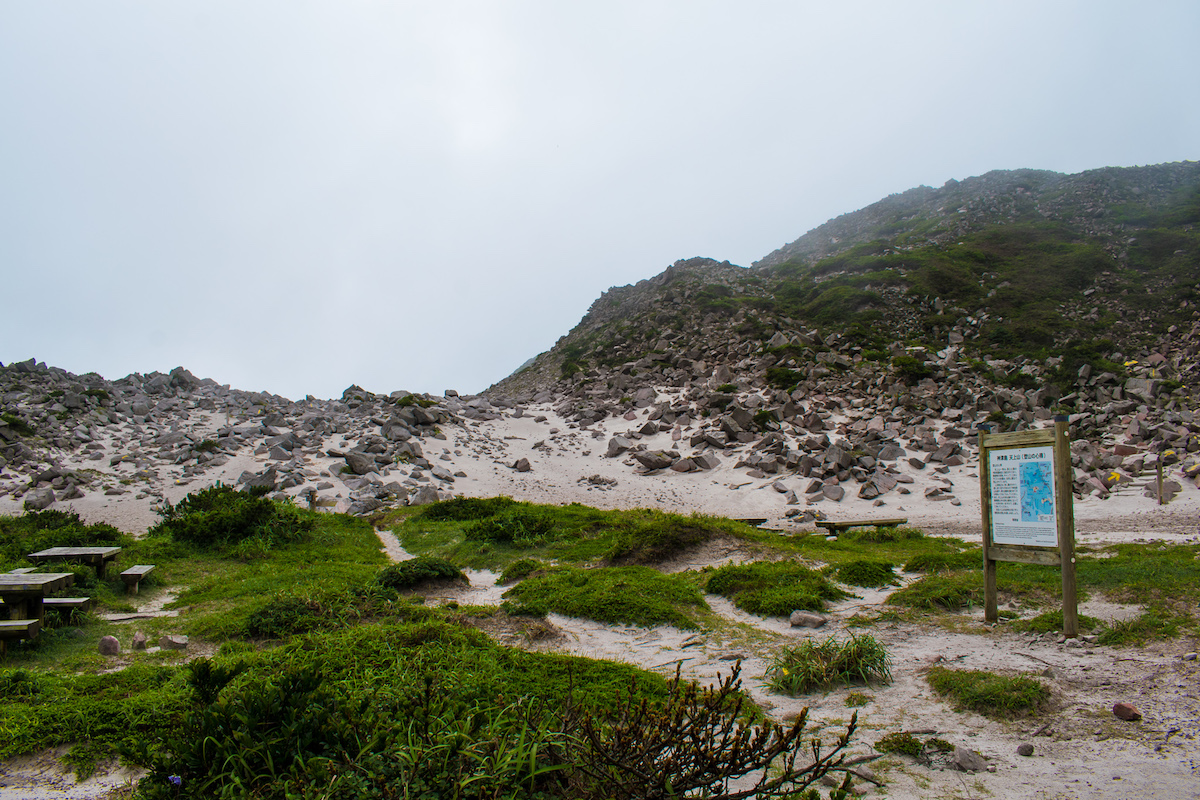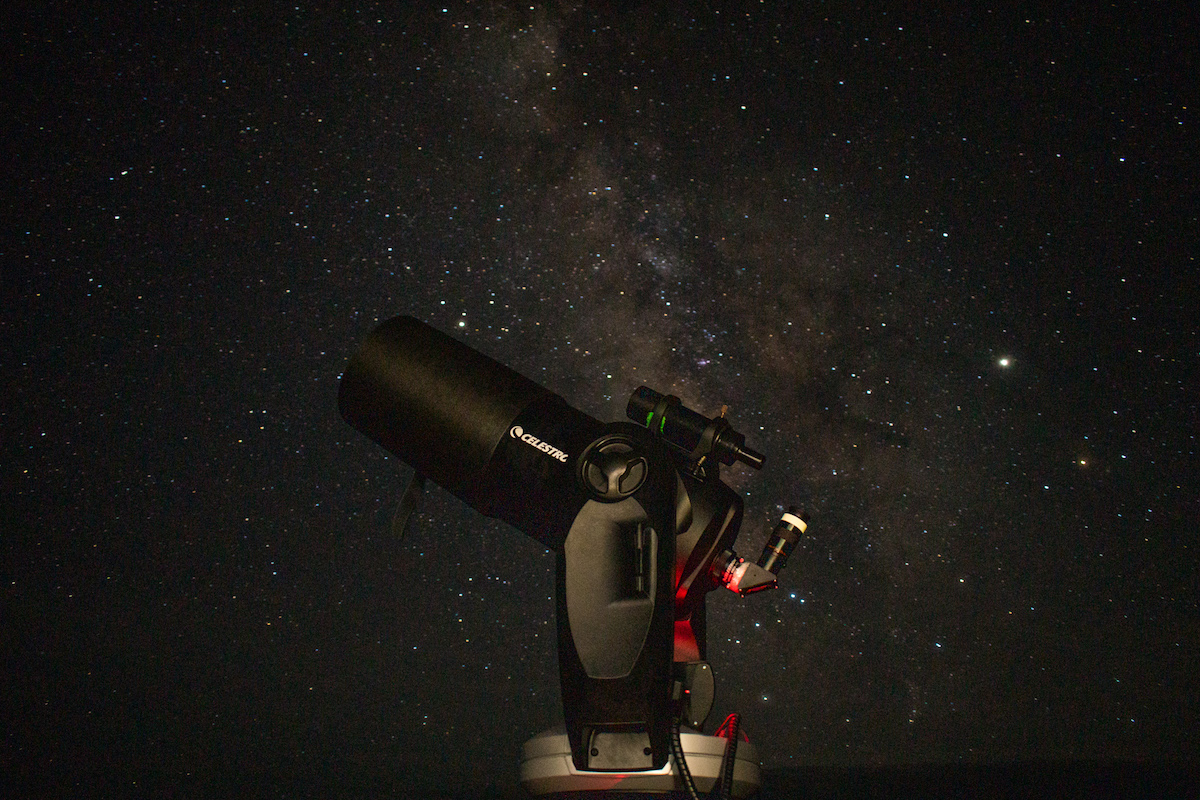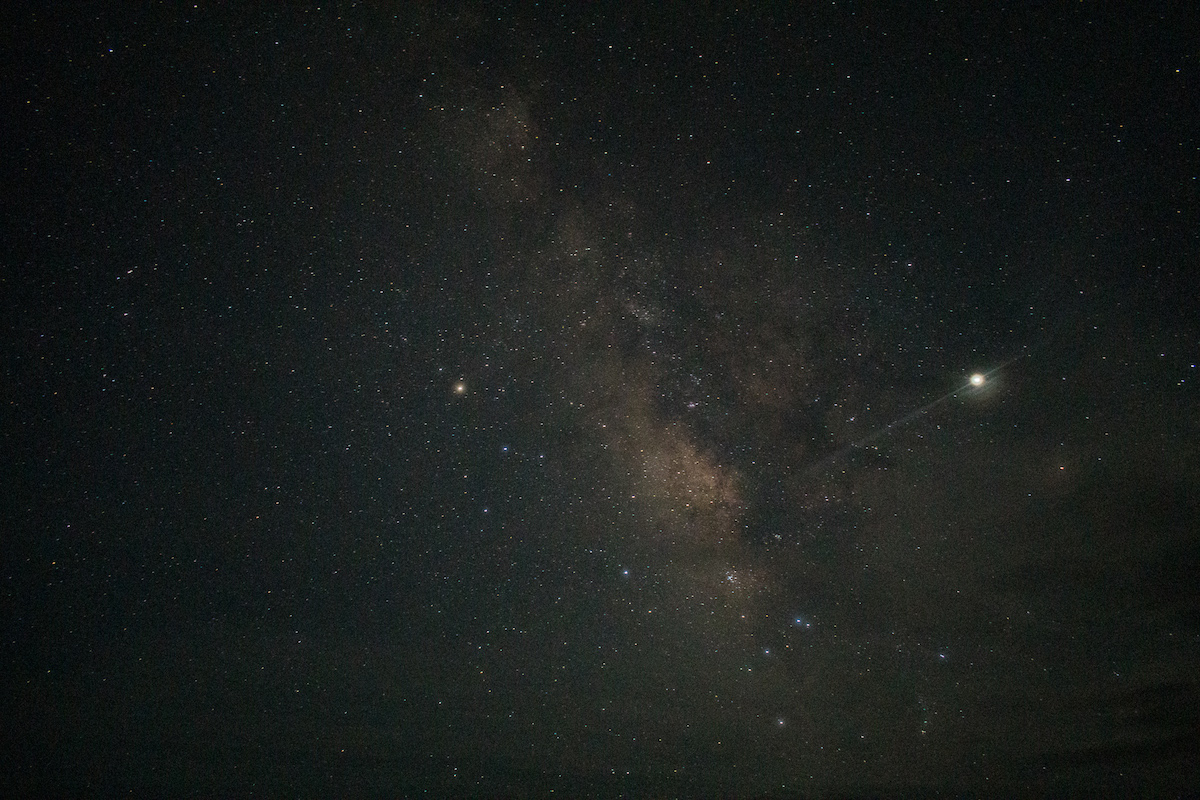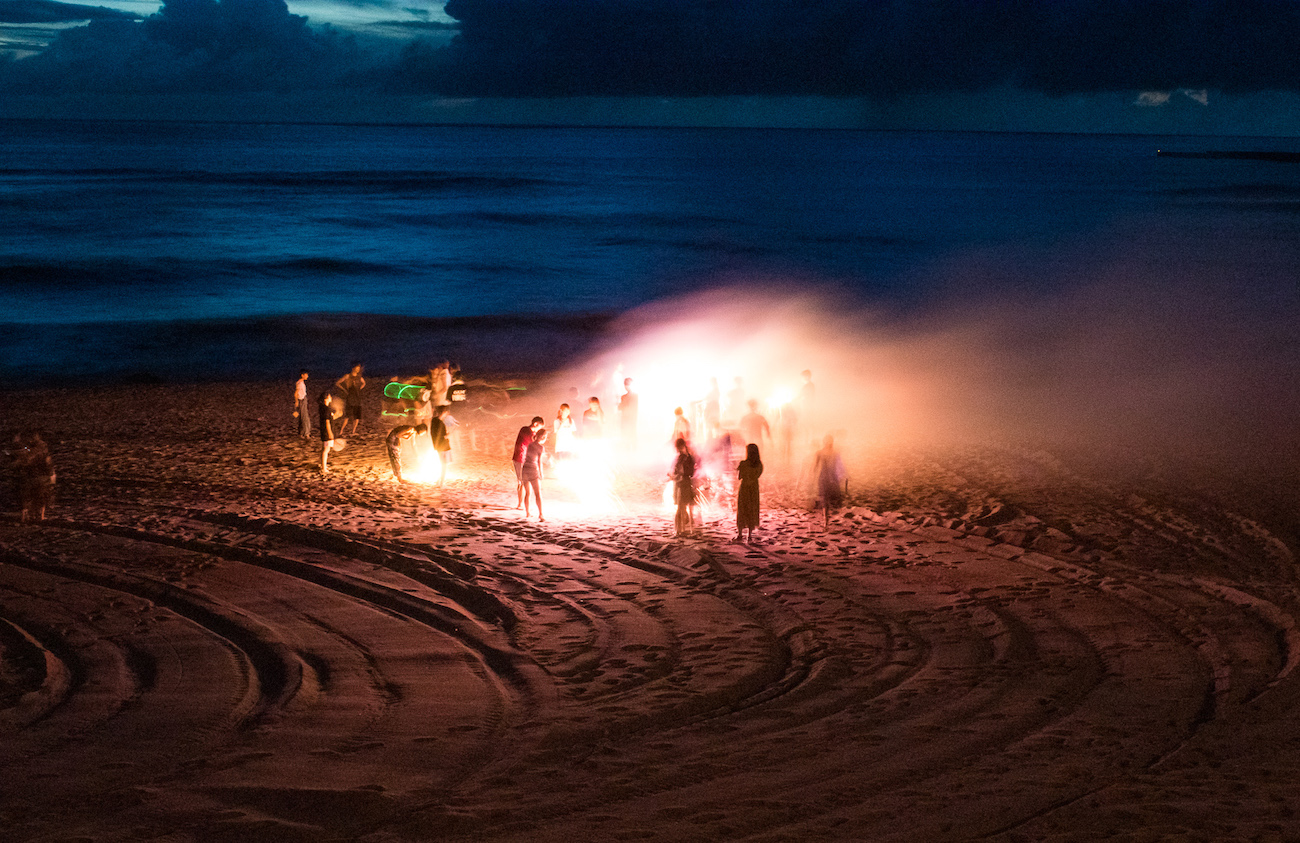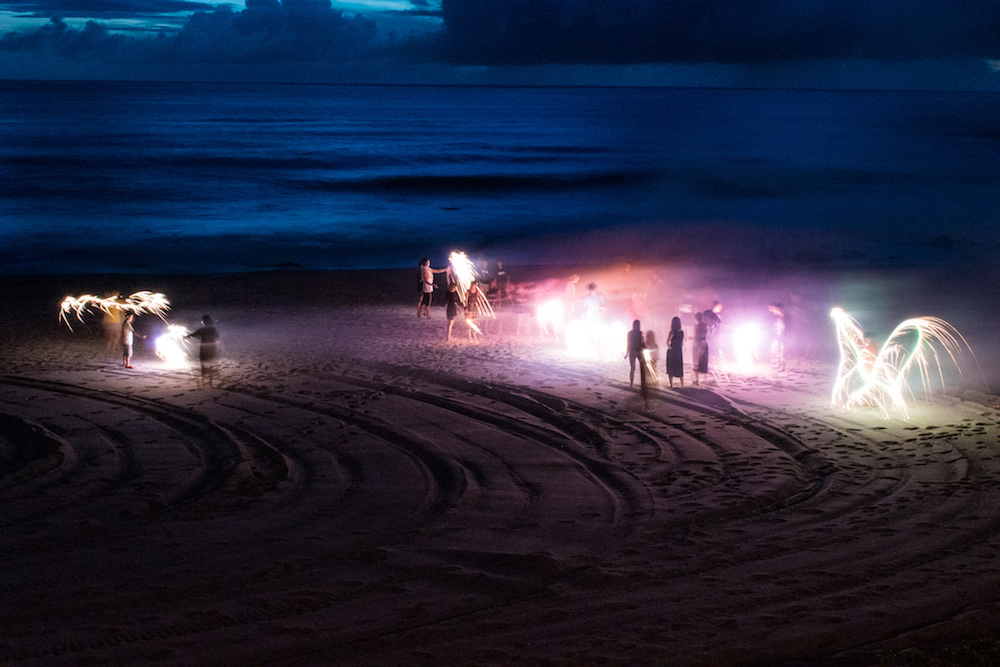神津島は正式には東京都に区分されているが、そこには新宿や渋谷のネオン街とはまったく別の世界が広がっている。神津島には、日本全国のどのビーチスポットよりも沖縄の島々に近い雰囲気がある。様々な生き物が生息する透明な海と、手つかずの美しい自然に触れることができ、日本の現代社会とは別世界にいるような感覚に浸ることができる神津島は、東京都内にいながら東京を忘れられる場所だ。
神津島は、東京都の南岸から少し離れたところに集まる東京諸島のひとつである。行政区分上は、神津島よりかなり大きな伊豆大島など近隣諸島も含め、東京都に属している。
島の大きさは、できるだけ多くのスポットを少しずつ楽しみたい方には絶好のサイズとなっている。島の面積はわずか18.58平方キロメートルと小さいが、観光スポットは多彩だ。島民は温かく迎えてくれるし、食べ物も美味しい。そしてなんといってもビーチが魅力的だ。絶好のロケーションと便利なアクセスに加え、キャンプも楽しめるということで、神津島は手ごろに羽を伸ばせる美しい観光地となっている。
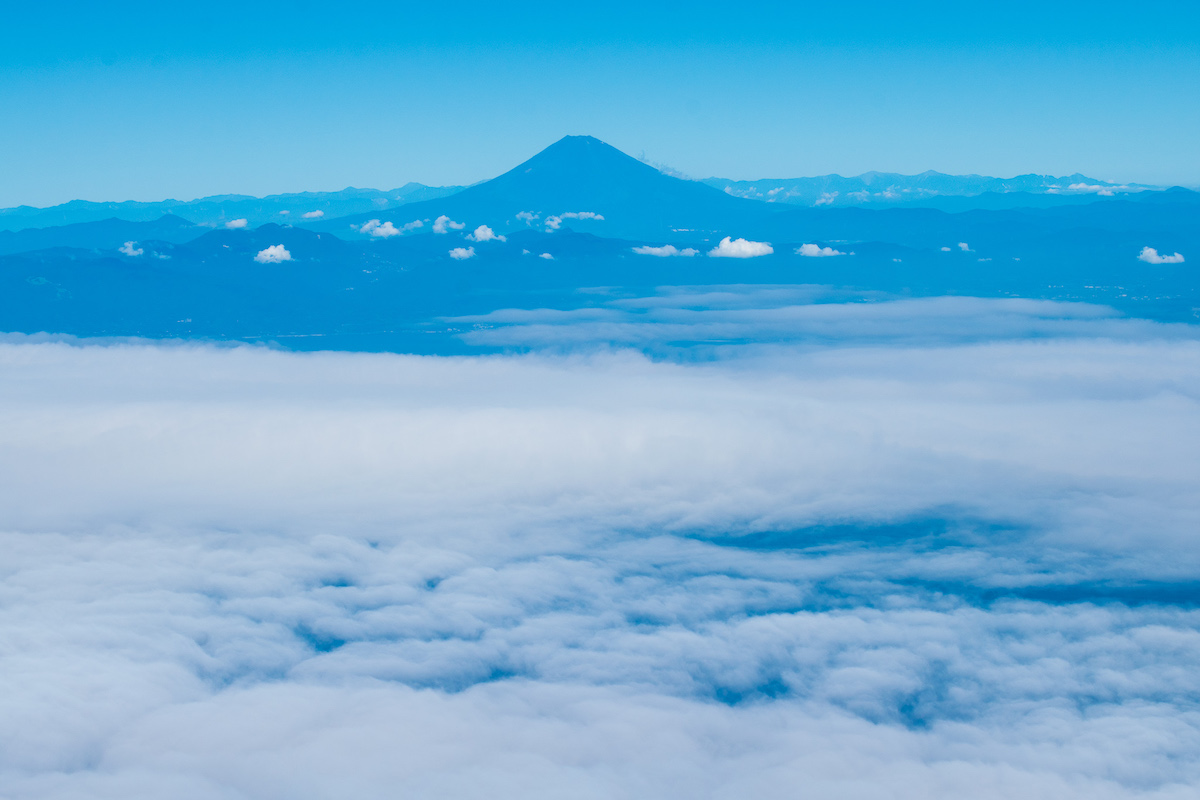
飛行機からみえる富士山
神津島のビーチ
神津島には4ヶ所に、それぞれまったく異なる特徴のビーチが存在する。最も中心部に近くアクセスが便利なビーチは、前浜海岸だ。こちらは島の観光スポットや宿泊施設の大半が密集するエリアでもある。前浜海岸は開放感のある大きなビーチで、純白の砂と、澄みわたった海が魅力だ。夏の夜には、花火大会も開催される。
前浜海岸に比べればやや小さいが、長浜海岸と沢尻海岸もまた、訪れる価値は十分にある。沿岸の砂や小石、岩場の景色はどちらも個性的だ。そして、残る1つのビーチが多幸湾で、島全体をひとり占めしているような雰囲気に浸りたい時にピッタリの場所だ。多幸湾は島の反対側に位置し、車でのアクセスが最も便利。
- 前浜海岸
- 長浜海岸
- 神津島マップ
海辺でキャンプ
神津島には3ヶ所にキャンプ場があり、夏場は大いに賑わう。いずれのキャンプ場も、小さめのビーチ(長浜海岸、沢尻海岸、多幸湾)の中か周辺に位置する。今のところ沢尻と長浜のキャンプ場は無料で使えるが、希望者は神津島観光協会で申込書に記入する必要がある。アメニティについては、ビーチの中にあるキャンプ場なので、ごく基本的なものに限られる。キャンプ用具は自分で用意の上、必ずすべてのルールや規則をしっかり確認し、自然を大切にしながら楽しんでほしい。
テントをレンタルしたい場合や、もっと設備の整ったキャンプ場を探している場合には、多幸湾がおすすめだ。島のシンボルとされる天上山の絶景を背に構える多幸湾キャンプ場は、森林に囲まれた緑豊かなキャンプ場で、海と山の両方を満喫できる。キャンプ地の利用料は1泊400円で、レンタルテントやデッキテントも別途利用可能だ。

沢尻海岸のキャンプ場
レンタルバイク
神津島を巡る際の移動手段はかなり限られている。島には不定期運行の村営バスと、タクシーが4台しかない。そのため短時間であちこち回りたい場合や、ビーチ巡りをしたい場合に最も便利な移動手段となるのが、レンタルバイクだ。レンタバイク・スズキは、島で唯一のレンタルバイク店だ。日本の運転免許証を所有していれば、50ccか90ccのスクーターをレンタルでる。料金は1時間1,300~2,400円、1日なら4,800~6,900円。
バイクの代わりに自転車という選択肢もある。自転車の場合は、1時間500円または1日2,000円でレンタルできる。神津島は内陸にいくほど坂が多い地形なので、内陸部を走るにはかなりの体力が必要だ。しかし海岸沿いを行くなら、自転車を使えば景色を眺めながら楽しく移動できる。

レンタルバイク
天上山で登山
島の真ん中にそびえる天上山は、神津島のシンボル的存在となっている巨大な火山だ。天上山の標高は572メートルで、ハイキングコースが2本整備されている。両コースの入り口から山頂までの所要時間はおよそ40~50分なので、登山初心者でも比較的楽に登れる。
山頂には、美しい火口が円形に広がる。火山の風景は様々で、ひとつずつ散策していくと、4つのまったく異なる世界を巡っているような感覚に陥るはずだ。周遊コースには見どころが4ヶ所ある。裏砂漠は、黒い砂漠のような場所で、白砂が黒い岩場を覆っている。伝説によると、この地に伊豆諸島の神々が集ったという。
千代池は、緑豊かな丘陵にある小さな池で、雨の後に出現する。不動池は苔に覆われた池で、天上山で最も神聖な場所とされ、龍神様が祭られている。そして不入が沢(はいらないがさわ)では、岩の崖から海を見渡すことができる。天上山を1周したい場合には多幸湾から向かうのがおすすめだ。合計11.5キロ、6時間程度の旅となる。
- 天上山
- 天上山
- 天上山
- 天上山
- 天上山
赤崎遊歩道で遊ぶ
赤崎遊歩道は神津島のメイン観光スポットのひとつとなっているが、その理由はそこを訪れてみれば一目瞭然だ。きれいな海に、美しくそびえ立つ岩場と飛び込み台があり、スキューバダイビングやシュノーケリングにも最適な夢のような場所だ。
島内のダイビングショップで体験コースに申し込めば、赤崎遊歩道に案内してもらえるだろう。水面からほんの数メートルの白砂の海底に色とりどりの珊瑚が広がり、人懐っこい魚や、個性的な海の生き物たちが仲良く共生する世界を覗き見ることができる。夏場の遊歩道には、老若男女が遊びに来る。もし勇気があれば、高さ数メートルの飛び込み台や、吊り橋からもダイブできる。
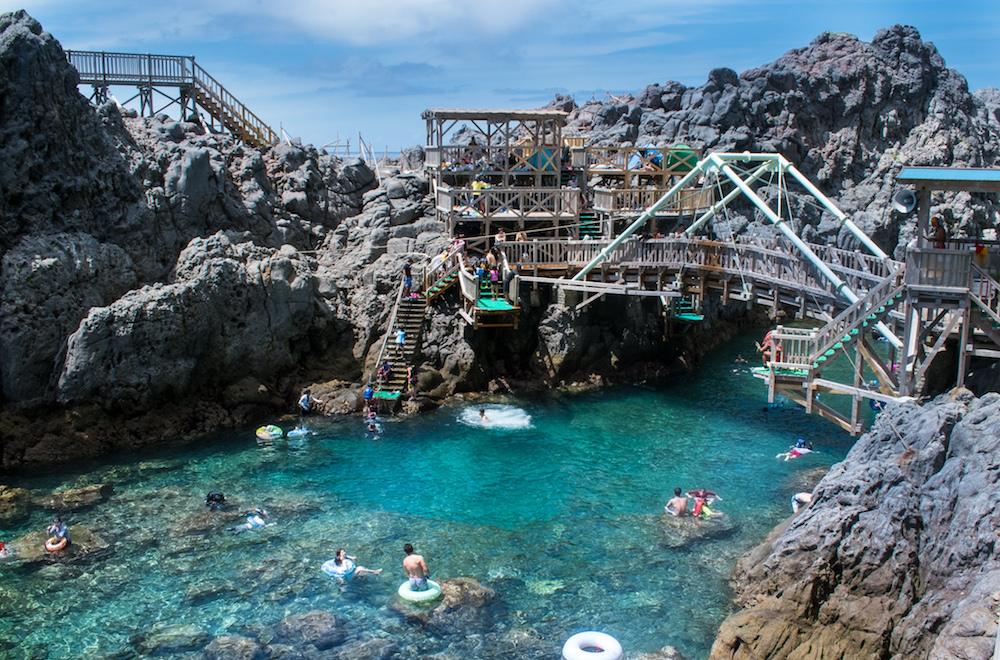
赤崎遊歩道
ゲストハウス&カフェ のらの郷土料理
神津島民おすすめの食材は魚介だ。そして島内で新鮮な海の幸を楽しめる最高のスポットが、ゲストハウス&カフェ のらだ。前浜海岸から近く、山の中腹に位置するゆったりとした雰囲気のカフェでは、島内屈指のランチがいただける。昼間はだいたい営業しているので、天上山、秩父山を登った後にはぜひ立ち寄りたいスポットだ。

のらカフェ
天体観測
神津島は、夜を迎えてもなお美しい。島には無駄な明かりがないので、真っ暗な夜空は天体観測にぴったりだ。絶景ポイントとしては、天上山をもう1度訪れてみてほしい。山道が自然の展望台となってくれる。天体観測ツアーもいくつか開かれているので、宿泊施設や旅行会社の窓口に問い合わせればアドバイスをもらえるはずだ。ちゃんとした望遠鏡を使えば、神津島からは土星や天の川、そして七夕伝説のもととなった2つの星座など、数々の星を間近に見ることができる。
- 星空観察
- 星空観察
- ビーチでの花火
- ビーチでの花火
アクセス
神津島には、フェリー、高速ジェット船、飛行機を使って行ける。神津島行きの航空便は、東京の調布飛行場から1日2便運航されており、所要時間は約45分。価格はシーズンにより上下するが、片道1万5,300円程度だ。
高速ジェット船は、飛行機の次に速い移動手段だ。東京の竹芝埠頭を出発し、約4時間で神津島港に到着する便が、1日1回出航している。乗船券は片道およそ9,770円。
夜行客船は、最も時間のかかる移動手段だ。夜に東京を出発し、神津島には翌日到着する。価格は客室の種類と日程によって異なるので、詳細はウェブサイトを確認のこと。
—
All photos by Lucy Dayman
—
Lucy Dayman | ルーシー・デイマン
オーストラリア生まれ。2016年、オーストラリア・メルボルンでのカルチャー・音楽雑誌の編集の仕事を辞め、日本で旅をしながら仕事を始める。フリーランスライターとしての仕事と旅の傍ら、フィルム写真を撮影している。
Instagram: @lucy.dayman.
HP: lucydayman.com
Technically part of Tokyo, Kozushima is a world away from the neon lights of Shinjuku and Shibuya. It seems far more familiar to the islands of Okinawa than any other beach location in all of Japan. With clear water, diverse marine life, untouched natural beauty and a feeling of remoteness that far from present in Japan’s modern cities, Kozushima island is an escape from Tokyo, that’s well, still Tokyo.
Kozushima is part of the Tokyo Islands, a cluster of remote-ish islands south of the Tokyo metropolis. In terms of administrative purposes, Kozushima and its neighbors like the much larger Izu Oshima are part of Tokyo city.
Size-wise, Kozushima is perfect for those who want a little of everything. It’s just 18.58 square kilometers large, but home to many attractions, friendly locals, great food and even better beaches. Thanks to its location and accessibility and camping options it makes for a beautiful budget island retreat!
Kozushima’s beaches
The island is home to four distinctly different beaches. The most central and accessible of all the beaches is Maehama. It’s where most of the city’s tourist attractions and accommodations are located too. It’s a large open beach with pure white sand, crystal clear waters and in the long summer evenings, it’s home to DIY fireworks displays.
Nagahama and Sawajiri beaches are a little smaller than Maehama, but they’re both well worth visiting, with their unique sand and pebble coasts and rocky aquatic landscapes. Tako Bay is the final beach on Kozushima, and it’s perfect for those who want to imagine they have the entire island to themselves. This beach is located on the other side of Kozushima and is best accessed by car.
Coast camping
Kozushima has three campsites, which do get quite popular in summer. The sites are all located in and around the island’s three smaller beaches; Nagahama, Sawajiriand Tako Bay. Both Sawajiri and Nagahama are currently free to use; visitors must fill out a registration application form at the Kozushima tourism office. In terms of amenities, both these locations are rather basic, given that the camping is actually on the beach. You’ll have to bring your camping equipment and be sure to carefully read all the rules and regulations looking after these pristine locations.
If you want to rent a tent, or are looking for a campsite with more comprehensive facilities, then head to Tako Bay. Backdropped by the stunning Mt. Tenjo, the island’s centerpiece, Tako Bay campsite is surrounded by lush forested mountains, offering the best of both worlds. Rental at the site is 400 yen per night, with rental tents and deck tents available too.
Rent a bike
The transport around Kozushima is rather limited; there’s the occasional town bus and about four taxis on the entire island. If you want to cover a lot of ground in a short time, or you’re hoping to beach hopping, a rental bike is the best option. Suzuki Bike rental is the only shop of its kind on the island. Holders of a Japanese driver’s license can get a 50cc or 90cc scooter. They cost 1,300 – 2,400 yen per hour or 48,00 – 6,900 per day.
Alternatively, a bicycle is another possible option. Rental is 500 yen per hour or 2,000 yen per day. Kozushima is rather hilly the further inland you go, which can be quite a bit of a workout. But for cruising along the coast, a bicycle is a fun and scenic way to explore.
Climb Mt. Tenjo
Sitting right in the center of the island, Mt. Tenjo is Kozushima’s imposing volcanic giant. The mountain is 572 meters high and features two main hiking trails. Both the trails take about 40-500 minutes from start to the mountain peak, making them relatively easy for non-experienced hikers too.
At the top of the mountain is Mt. Tenjo’s stunning crater loop. Strolling along the diverse volcanic landscape, you’ll feel as though you’re traversing four vastly different worlds. The circuit is comprised of four different corners. Urasabaku is the black desert; it’s dusted in white sand and home to black rocky peaks. Legend says this is where the Gods of the Izu Islands gathered.
Sendai-ike is home to lush green rolling hills and a small pond that emerges after rainfall. Fudoike features a mossy pond, and it’s one of the most sacred points of the mountain, where a dragon god is enshrined. Finally, Hairanaigasawa is home to rocky cliffs and stunning ocean views. If you want to make an entire loop of the mountain from Tako Bay – which is recommended – it’s an 11.5-kilometer round trip, and takes about six hours in total.
Spend the day at Akasaki Promenade
Akasaki Promenade is one of Kozushima’s main attractions, and once you see it, there’s no question as to why. It’s a marine wonderland is home to fascinating rock formations, beautiful water, diving boards and the perfect conditions for scuba diving and snorkeling.
If you sign up for a scuba diving course at one of the dive shops on the island, chances are they’ll take you here. Just meters below the surface you’ll discover a world of colorful coral, friendly fish, and other unique aquatic life all living together harmoniously on this white sand ocean bed. In summer, the promenade is a playground for both young and old. If you’re feeling brave, you can jump off the meters high diving board or even leap from the suspended promenade’s bridge.
Local cuisine at Cafe Nora
Seafood is what the folks in Kozushima do best, and one of the best places to taste the freshest catch on the island is at Cafe Nora. Situated on the mountainside, a short journey inland from Maehama beach, the laidback cafe offers some of the best lunch sets on the island. It’s an excellent spot to visit after climbing Mt. Tenjo and Mt. Chichibu and it’s open practically all day long.
Go stargazing
As the day starts to roll into the evening, that beauty of Kozushima certainly doesn’t rest. The island’s black, light-pollution free night sky is the ideal backdrop for stargazing. Make the journey back to the natural viewing platforms on the side of Mt. Tenjo for the perfect vantage point. There are several stargazing tours on offer, so ask your accommodation or the tourist information desk for their recommendation. With the right telescope, from Kozushima you can see nearby Saturn, the Milky Way and countless other constellations, including the two stars that inspired the famous summer Tanabata Festival.
How to get there
Access to Kozushima is available via ferry, high-speed jet boat, and airplane.
Flights to Kozushima from Tokyo’s Chofu Airport depart twice daily, the trip takes about 45 minutes, and tickets cost about 15,300 yen each way, depending on the season.
Jetspeed boat is the second quickest option. The journey from Tokyo’s Takeshiba Port to Kozushima Port takes about four hours and runs once a day. Tickets are about 9,770 yen each way.
An overnight passenger ship is the longest option. It departs Tokyo at night and arrives at Kozushima the next day. Prices vary depending on the type of accommodation and date, so check online for extra details.
—
All Photos by Lucy Dayman
—
Lucy Dayman
Originally from Australia, in 2016 Lucy left her job as an editor of a culture and music magazine in Melbourne to live, work and travel in Japan. Between freelance writing and traveling, she’s been dabbling in film some very amateur film photography, which you can check out on her Instagram: @lucy.dayman. Check out her other writing work and photos at lucydayman.com
